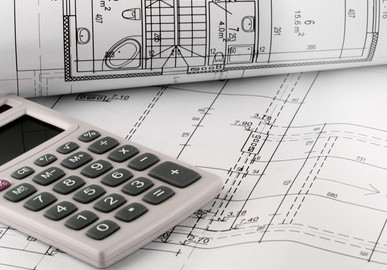Residential Construction Loans: 10 Things You Should Know
You may agree with us that, if you want a new home, you should build not buy. But how do you finance a custom home? We’ve asked Carl Salvo, President of Mid-Oregon Lending, to tell us about the difference between types of residential construction loans and how they’re different from a conventional loan. Carl is an Independent Mortgage Broker, a member of the OAMP for 13 year; his company specializes in conventional mortgages and ODVA loans.
Also see: How much does it cost to build a house?
10 Things to Remember:
- Securing a construction loan will require more time and money than a conventional loan.
- Banks will require more documentation for a construction loan.
- ‘Single Close’ loans finance the lot and the home and serve as long-term financing.
- ‘Two Step’ loans are used to finance the purchase of the lot and construction. The home owner will refinance with a conventional loan when the home is complete.
- Most banks will require at least a 20% down payment (very few will go less than 20% down and will require very compelling compensating factors to do so)
- The equity position will be based on the LESSER of the cost of acquisition or finished appraised value
- The borrower typically makes interest only payments only on the portion of funds used during construction
- The borrower/builder will take draws as needed to cover materials and labor completed
- The borrower AND builder will need to be fully approved by the construction lender
- Most construction lenders will only finance “conventional” homes. (no Yurts, recycled material homes, Converted Missile Silo’s, ETC)

Carl Salvo, President Mid-Oregon Lending
While it sounds ideal to build a home for your specific needs and wants, the process of applying for and closing a construction loan requires a much greater commitment of time and financial resources compared to financing an existing home with a traditional Conventional Mortgage. The reason for this is because those banks that fund construction loans are investing a considerable sum into an intangible asset that does not yet exist. As such, their requirements for documentation and a greater down payment from the buyer are greater than if they were financing an already existing home.
Construction loans a decade ago were fairly easy to come by, and could be originated and closed by Mortgage Brokers, Credit Unions, Banks, and some Mortgage Bankers. But the mortgage meltdown from 06 through 08 left several construction lenders holding the note on partially completed homes. Some builders simply walked away from partially built homes when home values plummeted, and many construction lenders took immense losses as a result.
In the aftermath, many construction lenders simply quit offering the product on a regional or national scale and in the current lending environment there are very few lenders willing to close a construction loan for a property outside the immediate area they serve. In layman’s terms, the construction lenders today seek primarily to serve only those home builders and customers in their immediate service area.
There are effectively two types of construction loans, and while they may go by different names by the banks offering them, for the sake of this article we’ll call them a “Single Close” and a “Two Step” loan. The single close construction loan is a single loan that finances not only the acquisition of the lot and construction of the home, but serves as the long term financing as well. Since the bank is taking a leap of faith that the home will be built “as advertised” with the plans and specs they’ve been provided, they’re still taking a risk in the home buyer and the builder in that if something goes wrong during construction, they could end up being the lien holder on a partially constructed home. And since banks are NOT in the business of building homes, they will mitigate this risk charging higher interest rates on construction loans. The greatest risk to the bank closing a construction loan is having either the builder or buyer default during construction and the higher rates allow them to spread that risk.
A Two Step loan differs in that the home buyer will close on one loan that is solely used to finance the purchase of the lot and the construction of the dwelling. Once the home is 100% completed, the homeowner refinances the construction loan with a permanent conventional loan of their choosing.
Both the single close and the two step loan have their distinct pros and cons and each individual home buyer/builder needs to evaluate those to determine which product is best. While the single close loan only requires the borrower to sign one set of loan documents and they have one loan that covers both the construction and long term financing of the home, the rates at closing are anywhere from .25 to .5% higher than a traditional conventional loan may be at that time. Again, this is due to the added risk the construction lender is taking on. The two step loans offer the client the ability to choose a permanent loan of their liking after the home is complete that typically comes in at a lower rate than a conventional loan, but two loan closings result in two sets of closing cost, two signings, etc.
The variables that a homeowner should consider include the length of time they plan to keep the home, the current interest rate environment (are rates rising or falling?) and their own risk tolerance knowing rates can and probably will either go up or down while the home is being built.
Aside from their differences, the two loans do have some similarities:
Most banks will require at least a 20% down payment (very few will go less than 20% down and will require very compelling compensating factors to do so)
The equity position will be based on the LESSER of the cost of acquisition or finished appraised value
The borrower typically makes interest only payments only on the portion of funds used during construction
The borrower/builder will take draws as needed to cover materials and labor completed
The borrower AND builder will need to be fully approved by the construction lender
Most construction lenders will only finance “conventional” homes. (no Yurts, recycled material homes, Converted Missile Silo’s, ETC)
If you’re considering building a home, it will likely be one of the most rewarding, yet time consuming home loans you’ll ever take out, and make SURE to check multiple sources for construction loans to thoroughly evaluate the pros and cons of each lender’s products.




It would be nice if there was a program for people who would like to build new but don’t have 50k, 60k or even more laying around to reach that 20%